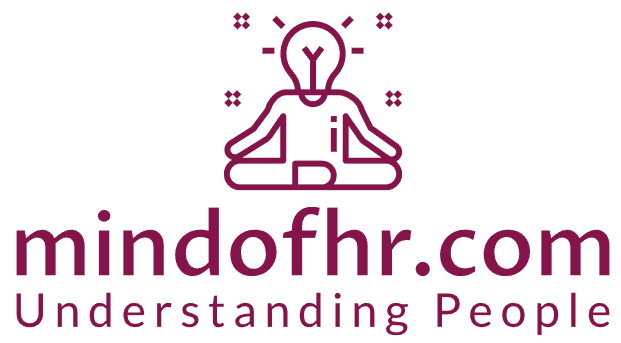Human Resources (HR) is a multifaceted discipline that acts as the lifeblood of an organization, ensuring the efficient management of its most valuable asset—its workforce. Within the expansive realm of HR, two distinct yet interconnected roles stand out: Industrial Relations (IR) and Employee Relations (ER). These roles play a crucial part in shaping the employee experience, fostering workplace harmony, and contributing to organizational success. In this extensive exploration, we will delve into the nuanced differences between IR and ER roles across a spectrum of industries, shedding light on their unique functions and the impact they have on diverse workplaces.
Industrial Relations (IR) Unveiled:
Industrial Relations, as a specialized facet of HR, has its roots deeply embedded in the history of labor movements and the evolving dynamics between employers and employees. This segment traditionally deals with the regulation and management of relationships within the workplace, often involving labor unions. Core responsibilities of IR include collective bargaining, negotiation, and dispute resolution, with an overarching aim to establish and maintain a harmonious work environment.
Manufacturing Industry: A Symphony of Labor Harmony
In the manufacturing sector, where the hum of machinery and assembly lines is the heartbeat of production, IR takes center stage. The intricate dance between management and labor unions is a defining characteristic of this industry. Here, negotiations extend beyond mere monetary considerations to encompass working conditions, safety protocols, and the overall welfare of the workforce.
Example 1: Automotive Manufacturing
Consider the automotive manufacturing industry, where large-scale production facilities employ thousands of workers. IR professionals engage in intricate negotiations with powerful unions to establish fair wage structures, reasonable working hours, and comprehensive benefits packages. The result is a delicate equilibrium that allows for smooth production while prioritizing the well-being of the workforce.
Example 2: Public Sector Dynamics
In the public sector, including government agencies and institutions, IR plays a critical role in managing relationships with civil servants and public employees. Governments, often bound by stringent regulations and policies, engage in negotiations with public-sector unions to address diverse concerns, ranging from salary structures to working conditions.
Employee Relations (ER) in Focus:
While IR traditionally revolves around collective interactions and agreements, Employee Relations casts a wider net, encompassing the individual dynamics between employees and the organization. ER professionals are tasked with creating a positive and conducive workplace environment by addressing conflicts, managing performance, and nurturing a culture that promotes employee satisfaction and engagement.
Technology Industry: Nurturing Talent in the Silicon Valley
In the dynamic and ever-evolving technology sector, ER takes on a multifaceted role that goes beyond the traditional boundaries of HR. Companies like Google, Facebook, and other tech giants are known not only for their innovative products but also for their progressive ER initiatives. In this context, ER is a strategic tool for talent attraction, retention, and overall organizational success.
Example 1: Google’s Employee-Centric Approach
Google, renowned for its unique workplace culture, places a strong emphasis on ER initiatives that prioritize employee well-being and personal development. The company’s ER programs include flexible work arrangements, comprehensive health and wellness benefits, and extensive career development opportunities. This approach not only enhances employee satisfaction but also contributes to Google’s reputation as a top employer in the competitive tech industry.
Example 2: Start-ups and Agile ER Practices
In the startup ecosystem, characterized by agility and innovation, ER practices often take on a dynamic and adaptive nature. Smaller companies, driven by the need for rapid growth and competitiveness, focus on creating a positive and inclusive work environment. ER strategies in startups may involve mentorship programs, open communication channels, and employee recognition initiatives to foster a sense of belonging and commitment.
Service Industry: Navigating the Frontlines of Customer Engagement
The service industry, spanning hospitality, retail, and customer service, places a premium on the interactions between employees and customers. ER in this context is not only about internal employee relations but also extends to creating positive external interactions that enhance the overall customer experience.
Example 1: Hospitality and Employee-Customer Synergy
In the hospitality sector, where customer service is paramount, ER efforts are geared towards training programs that enhance customer service skills. Hotels and resorts invest in initiatives that not only address workplace concerns but also equip employees with the tools and knowledge to deliver exceptional customer experiences. This dual focus on internal and external relations ensures a harmonious workplace and satisfied guests.
Example 2: Retail Dynamics and Conflict Resolution
Retail environments, marked by high-paced interactions and diverse customer demographics, often necessitate robust ER strategies. ER professionals in retail settings focus on conflict resolution, diversity and inclusion initiatives, and employee training to navigate the complexities of customer-facing roles. This approach contributes to employee satisfaction, reducing turnover and enhancing the overall customer experience.

Conclusion:
In this expansive exploration of the IR and ER roles within the HR domain, we’ve traversed the diverse landscapes of industries, each with its unique challenges and dynamics. The distinctions between Industrial Relations and Employee Relations are not just semantic; they represent strategic nuances that shape the core of organizational success.
From the rhythmic negotiations of the manufacturing sector to the agile and innovative practices in the technology industry, and the delicate balance between employee and customer interactions in the service sector, the HR profession emerges as a dynamic force. By understanding and adapting to the specific needs of their industries, HR professionals can orchestrate strategies that resonate with the heartbeat of their organizations, creating workplaces that thrive and endure in the ever-evolving global landscape.











